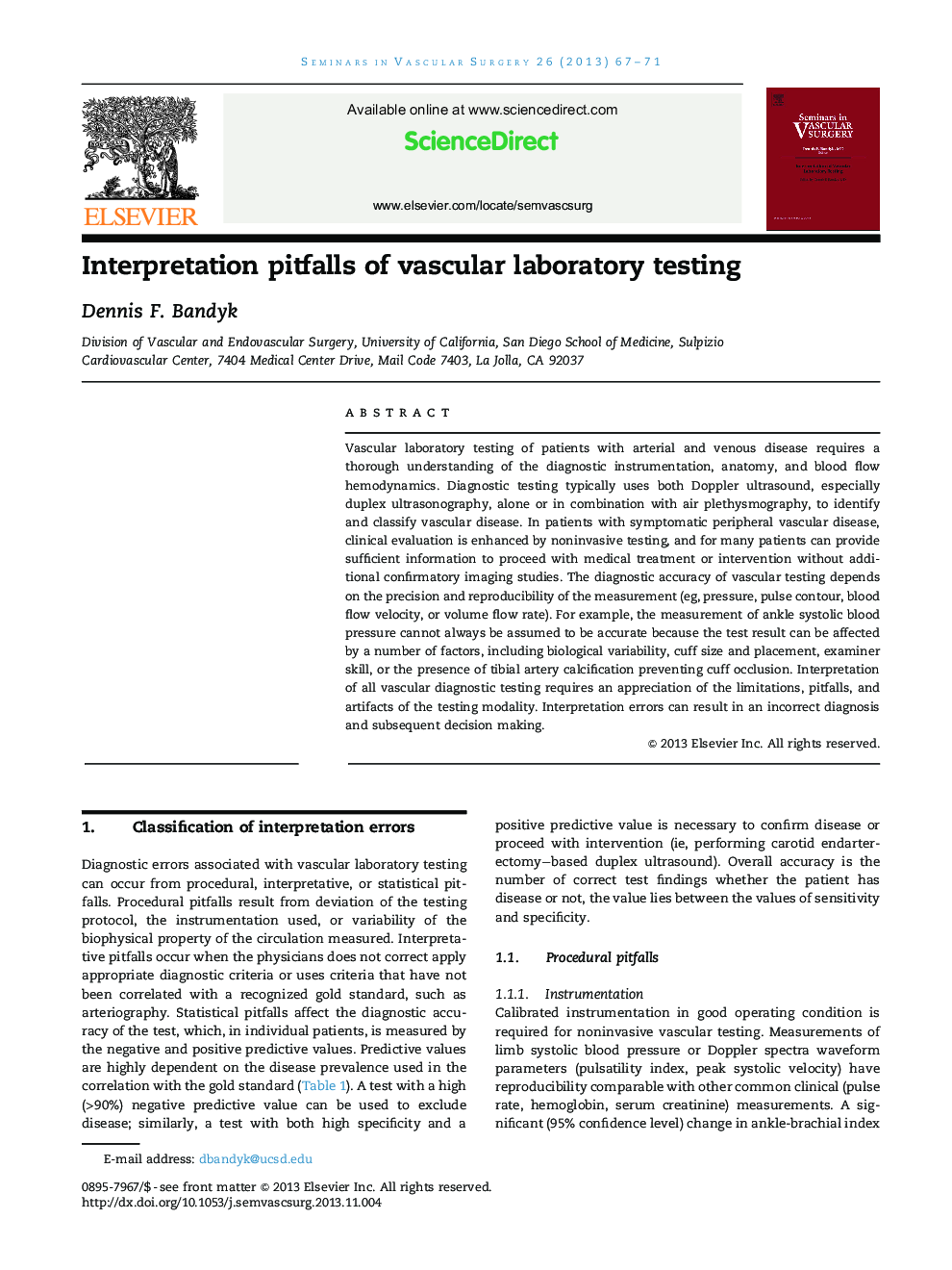| کد مقاله | کد نشریه | سال انتشار | مقاله انگلیسی | نسخه تمام متن |
|---|---|---|---|---|
| 3026151 | 1579127 | 2013 | 5 صفحه PDF | دانلود رایگان |

Vascular laboratory testing of patients with arterial and venous disease requires a thorough understanding of the diagnostic instrumentation, anatomy, and blood flow hemodynamics. Diagnostic testing typically uses both Doppler ultrasound, especially duplex ultrasonography, alone or in combination with air plethysmography, to identify and classify vascular disease. In patients with symptomatic peripheral vascular disease, clinical evaluation is enhanced by noninvasive testing, and for many patients can provide sufficient information to proceed with medical treatment or intervention without additional confirmatory imaging studies. The diagnostic accuracy of vascular testing depends on the precision and reproducibility of the measurement (eg, pressure, pulse contour, blood flow velocity, or volume flow rate). For example, the measurement of ankle systolic blood pressure cannot always be assumed to be accurate because the test result can be affected by a number of factors, including biological variability, cuff size and placement, examiner skill, or the presence of tibial artery calcification preventing cuff occlusion. Interpretation of all vascular diagnostic testing requires an appreciation of the limitations, pitfalls, and artifacts of the testing modality. Interpretation errors can result in an incorrect diagnosis and subsequent decision making.
Journal: Seminars in Vascular Surgery - Volume 26, Issues 2–3, June–September 2013, Pages 67–71